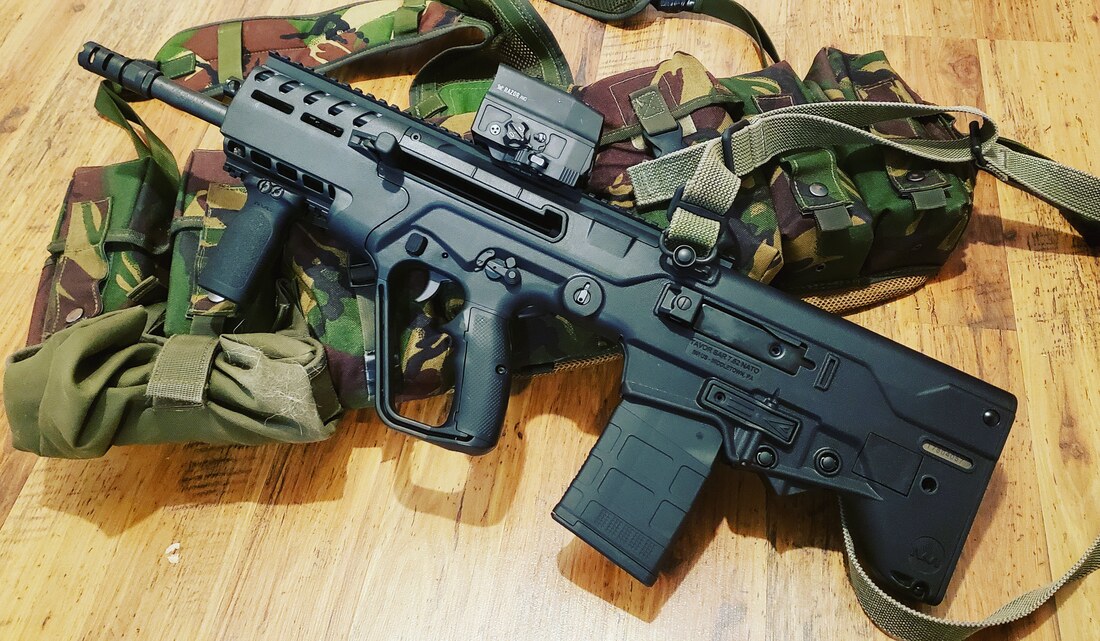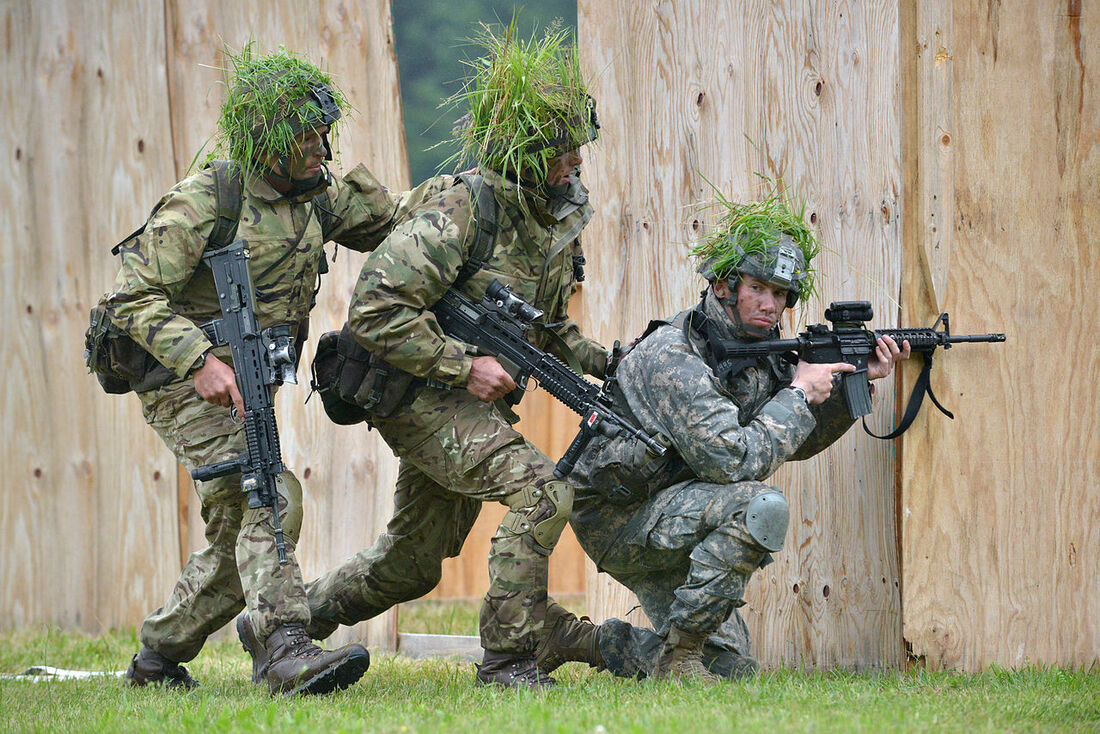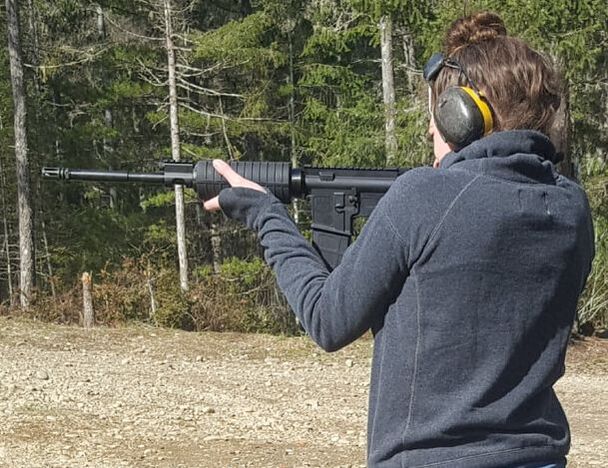|
Recently I shamelessly picked up the IWI Tavor 7. Unfortunately this marks the end of my PTR91 videos since I will need to sell it in order to swallow the almost $2.000 investment I just made in my .308 game. Alot has happened in just a day, which is all the time I have had with it, at the time of typing up this article. I have practiced with it's manual of arms, zeroed my optic of choice, and set it up for close to medium range engagements. The Tavor 7 is being well-groomed to be my battle rifle of choice.
I have owned the Streamlight TLR7 for a few years and have had mixed results, but generally have found it wanting for much improvement in terms of controls, lumen, and durability. I decided to get an Olight PL Mini 2 Valkyrie for several reasons. I will try to cover them in some detail, but this is not a review ending in a recommendation for those who have had good experiences with other weapon lights.
I would classify myself as a shooter that takes pride in being well rounded due to my understanding of the method of marksmanship, allowing me to move from one platform to another without much of any need for an adjustment period. This is a result of me being able to read things like relative distance, size of target, time given, and develop a method of marksmanship with components that will help me achieve my objective. Therefore, we have methods of marksmanship. What about the fundamentals? There is no such thing in shooting. Let me explain…
One of the more forgotten elements of fitness in my mind is agility in full fighting order (FFO) which includes body armor, ammunition, water, rations, medical gear, navigation equipment, and operational gear. This load can be easier to maneuver with if you have a setup that lowers the center of gravity. I like the British belt kit concept for this reason. It allows me to carry a generous amount of gear for 24 to 48 hours and allows me to minimize the load on my trunk and torso. This in turn helps me minimize the risk of developing irreversible injuries to my spinal column whilst fighting. But with that said, whatever layout you choose, it should allow functional and effortless access to your combat loadout without hindering manipulations. Now let’s move on to discussing agility with your fighting load.
Aiming a pistol Is nothing fancy, but it can always use visual assistance. We are basically using the sights as a reference to verify that our bullets will hit the target roughly where we need it to. Too often we are hearing that we need to STARE/FOCUS on the front sight. This is merely a method of trying to get people to lessen the likelihood of movement of the sights. I feel that this is stupid since we don’t need THAT level of visual focus to see if the sights are staying aligned. Simply watch the threat/target and lift your gun until your sights sit between. They will be a bit hazy but it will be unmistakable whether they are aligned and moving. Plus, having a hard focus on a close object and leaving further objects hazy is going to adversely affect accuracy. The eye is going to not be able to help but see the sights accurately and you will be able to see them with precision due to the close range. Try using your thumb to aim at little letters in this article. Watch the word with a hard focus and bring your thumb up like a pistol sight. The edges will be hazy but sharp Also, look at the current RMR fetish where this is the exact visual method used. If this is used for electronic sights, what is the excuse for all other sights? This is a simple explanation and example proving my point. I have been doing this since I started shooting in Marine Boot Camp. Not being able to see the target at 500m made it necessary. Go figure, though I was supposed to focus on the sight, I hit perfectly using the method of focusing on the target. Since then it made no sense the stare at the sight when the sight is not the threat that I should be monitoring during the engagement anyways. How are you going to monitor your shots on target if you stare at the sights? Perform constant shifts in focus? Ridiculous. How do you think machine gunners track their tracers? Stare at their barrel or sights to ensure no movement? PFFF!!
The relationship our brain has with our bodies is truly remarkable if you delve into all the little things that we know. The part I am particularly interested in is how well our brains adapt to certain things such as shooting. If we look at the precise actions involved in shooting, they are largely absent in our daily life. In many cases, we are doing things in isolation and combination that we will probably never perform elsewhere. This is why I think it is important that we not take a nonchalant approach to training new shooters. Stacking a ton of absolutely new concepts on someone and demanding precision is not impossible. The problem lies with being able to truly learn and create patterns that our brains will be able to not only remember, but build on. In this article I want to look at the task of shooting and controlling the recoil of a pistol with a proper grip technique, which is something people spend years trying to get right. Perhaps a look at everything from a neurological standpoint may help a little.
Almost 4 years ago, Smith & Wesson release the 2.0 series which included the new “Compact” 4” model, which directly competes with the much-loved Glock 19/23 in size and capacity. After years of success with the M&P line, Smith & Wesson noticed a few things that could use changing to further improve an already robust design without necessarily fully inventing the wheel. If you look at the M&P 2.0 line, you will see how the engineers took the older generation and basically changed only that which needed improvement and left the rest alone. This means that there is still some parts compatibility between the older generation and the newer 2.0, such as magazines, springs, sights, and other generally high wear parts, making the switch that much easier for those of us worried that parts we already have will be useless. Granted, my compact is a new size addition, requiring a new set of recoil springs for my collection.
This may be an odd subject to try and cover, but I feel like this could be a healthy subject to tackle. I don’t want to give the illusion that one is inherently more righteous over the other. They each have a purpose in helping to develop, enhance, or maintain your overall skills if used properly and strategically. However, I feel that most people fail to understand the difference based on the words they use to describe what they are doing. I want to get some clarity about what is actually being done on the range or at home...because when you call everything you're doing "TRAINING", you sound like an idiot.
|
Do It RiteAlaska-Based Youtube Vlogger, Retired Marine, Firearm and Gear Tester. Archives
December 2023
Categories
All
|








 RSS Feed
RSS Feed